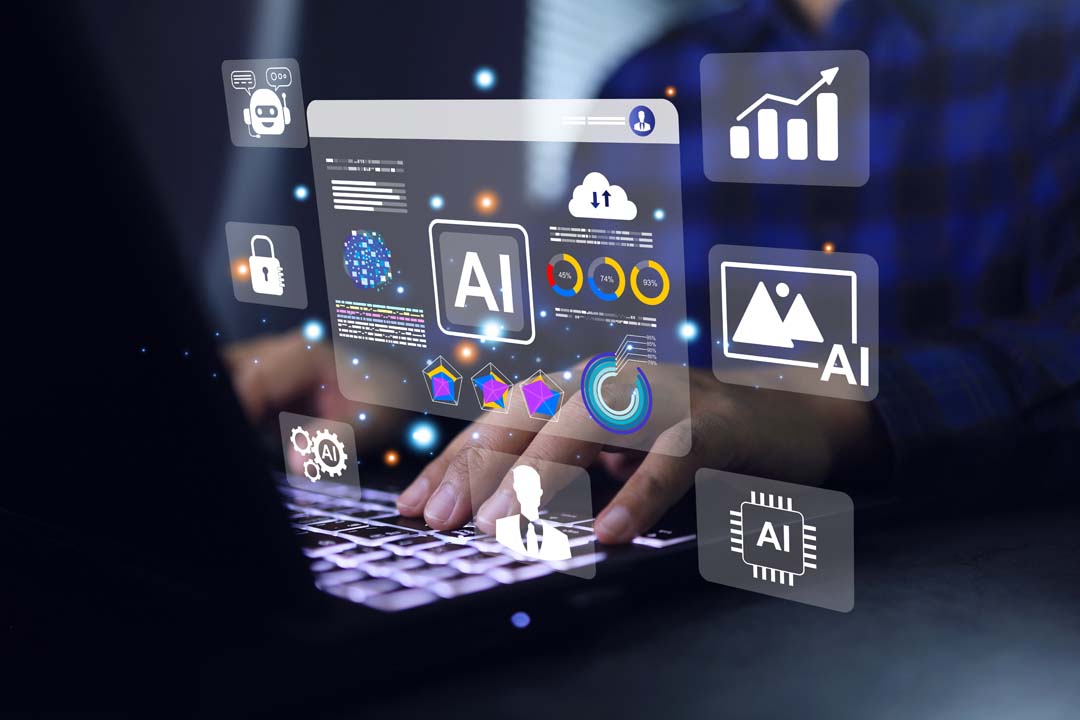Ricci Masero looks at the latest trends and best practices in marketing, strategy, and corporate training and in this feature focuses on not dismissing AI just because it isn’t good enough… yet
I recently went to an HR business conference where integrating generative AI into corporate training programs sparked a heated debate. One keynote speaker boldly declared that generative models like ChatGPT produce only superficial content, riddled with inaccuracies. He warned the audience that relying on this technology would severely compromise quality training.
We must be willing to re-evaluate outdated assumptions on AI capabilities
As the crowd murmured, I understood some of the underlying concerns. Current AI still requires substantial guidance. But dismissing generative writing tech wholesale seems short-sighted when it’s evolving so rapidly.
Training AI for training output
I remembered a forward-thinking instructional designer I follow. She “primed” the model using specific definitions, used well-structured prompts (developed through iteration) and used its initial drafts for assessment questions. This simple workflow will let her scale content output tremendously while maintaining rigorous subject matter standards through human oversight.
As the crowd continued peppering the keynote with scepticism about the capabilities of Gen AI in training, I realised the limitations they described were already outdated. Just the week before, I read a post about Claude from Anthropic – a model that’s showing substantially better comprehension, reasoning, and judgment abilities.
The knee-jerk reactions around me underlined why it’s so critical that we stay open-minded and proactively experiment rather than prematurely dismissing an enormous opportunity. Our job as professionals and industry experts is to patiently evaluate emerging technologies and guide them responsibly – not cling to status quo methods without deeper consideration.
Generative AI concerns and limitations
One of my main takeaways from the conference is that many people doubt AI’s ability to produce quality training content. Two major concerns keep coming up – that the information is superficial and inaccurate. These are understandable issues with today’s Gen AI technology.
Current AI models tend to deliver content that lacks depth. The overviews they write are usually broad rather than diving deeper into complex aspects. However, comprehension abilities in Large Language Models (LLMs) are advancing rapidly.
Inaccuracy is another valid shortcoming. When generative models produce text, errors often occur involving bias, dates, specifics, and facts – known as AI hallucinations. This happens because AI develops content based on probabilities from its training data.
While these points of superficiality and inaccuracy are relevant critiques, we must consider how swiftly AI learning is progressing. Capabilities that seem lacking today may be strengthened much sooner than we expect. Dismissing the technology outright bases decisions on limitations that are temporary.
The role of trainers is also important here. Instructional designers provide critical guidance and oversight that addresses AI content gaps. Subject matter experts must still vet and confirm accuracy. So, AI augmentation simply scales production to take more mundane tasks off our plates.
The promise and potential of Gen AI for L&D
Yes, today’s AI has limitations, but we also need to think about its future promise for training. With helpful guidance, generative AI could transform individual’s jobs in corporate training and the ability of our companies to develop employees.
AI could help instructional designers tremendously by taking over more repetitive work. This would allow focusing on the higher-level thinking and strategy that really moves the needle on learning and performance.
Companies could also gain a lot. AI could allow them to scale training way up and reach many more employees. They’ll also likely save money in content production costs over time.
So rather than focusing on what AI can’t do now, we should envision how it might augment our efforts. If companies implement it responsibly and instructional designers provide good oversight, AI could make employee training more effective. We should approach it with an eye towards understanding the real potential, with an open and forward-looking mindset as there are so many possibilities still ahead.
Benefits for instructional designers
Generative AI promises to make instructional designers far more efficient. Content creation demands excessive manual effort. AI could drastically accelerate drafting training materials.
Instructional designers may use AI to:
- Quickly generate outlines and rough passages
- Rapidly research training topics
- Easily create a baseline of themes/topics
- Generate ideas and overcome writer’s block
Focusing less on repeated content production allows more time for adapting materials, customising programs, and enhancing learner experiences. It also enables concentrating on high-value work like coaching and strategic collaboration.
Benefits for organisations
The scaling abilities of generative AI also offer immense advantages at an organisational level.
Companies stand to:
- Reach larger audiences faster with training initiatives
- Reduce costs associated with content development
- Ensure learning continuity as teams and priorities shift
Generating more development materials faster and for lower cost is extremely valuable amidst rapid digital transformation. This technology may soon let organisations educate workforces continually, broadly, and more affordably.
Responsible implementation of GenAI
Of course, integrating emergent technology requires thoughtful diligence.
Organisations should:
- Define ethical principles and frameworks for AI adoption
- Supply quality datasets that encourage accurate, appropriate content
- Establish rigorous review processes to verify quality
- Continuously evaluate output to address errors promptly
- Adjust application based on regular monitoring
With prudent guidance and governance, companies can harness AI efficiently while prioritising ethics and employee trust. This obliges learning leaders to stay actively attuned as capabilities advance.
Stay future-focused in a time of rapid change
To fully harness the promise of AI, learning teams must embrace a future-focused mindset. With new advances emerging constantly, we need flexibility. Being rigid about current limitations prevents us from envisioning possibilities. Progress is far outpacing our assumptions about what AI can handle.
We also can’t just expect AI to work perfectly alone. Responsible adoption means actively guiding it – almost like coaching a rookie teammate. We must supply quality data, guardrails and give feedback to the systems as they learn.
Rather than criticising weaknesses, our job is to nurture strengths through effective partnership. With constructive input and patience as coaches, we enable models like ChatGPT and Claude to keep rapidly improving.
The choice is ours. We can dismiss a potentially enormous opportunity because today’s AI isn’t perfect. Or we can adopt a future-focused mentality centred on opportunity, guidance, and understanding.
If we remain open and committed to responsibly integrating increasingly powerful models, AI-augmentation may soon provide immense advantages. But we must be willing to re-evaluate outdated assumptions on its capabilities and our implementation strategies.
Gen AI in training: the best is yet to come
We should not be too quick to write off generative AI in the corporate training industry. While current models may produce superficial content and lack deeper insights, capabilities are rapidly advancing across metrics like accuracy and reasoning.
If we take the time to properly understand, guide, and supply quality datasets to these systems, generative AI holds immense promise to support learning teams – letting them scale content creation and focus more on customisation, adaptation, and high-value work rather than just content production.
Dismissing this technology outright due to early limitations risks throwing away a tool that could profoundly enhance our capabilities if given patience and constructive input as it evolves. Rather than rejection too early, we owe it to ourselves and our organisations to patiently but optimistically guide generative AI tech when applied to corporate training.
If we strive to truly understand how quickly AI is evolving, the choice becomes clearer. We have a remarkable opportunity to usher in a new age of more accessible, affordable, and empowering training.
Adopting this technology responsibly will challenge us. But the boundless upside for both empowered workforces and empowered trainers makes confronting that challenge worthwhile. The future beckons for a symbiotic human-AI training team built to promote imagination, ingenuity, and unlimited lifelong growth.
Ricci Masero is Marketing Manager at Intellek




